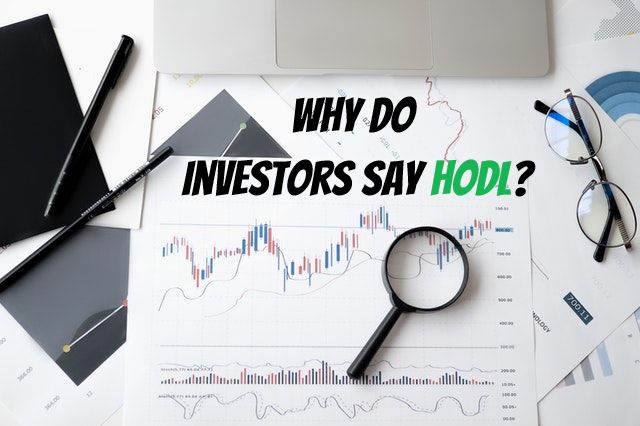By now, you know that cryptocurrencies have taken the world by storm, especially in recent years as mass digitalization is offering new and exciting possibilities in the monetary realm.
With their rapid development and widespread adaptation, new terminology that follows investment behavior was developed for daily use. You have probably come across some related terms of the crypto world and might not even be aware of it. Ever heard of HODL?
If you are considering joining the crypto cosmos as well, knowing the right terminology is, of course, essential. Keeping that in mind, the HODL abbreviation is one you want to keep an eye on as you learn to navigate the field.
This is where reliable and up-to-date info spots such as Cypherpunk Holdings come in handy to keep you on top of your game about all things cryptocurrency, blockchain, NFTs, and more.
Meaning of HODL
Widely recognized as “hold on for dear life”, this particular phrase is a vital component and popular term in investing and one that might point you in the right direction in times of making crucial business decisions.
What started off as a December 2013 misspelling of a user who was holding onto his Bitcoin in spite of the coin crash at the time is now a staple term in the cryptocurrency community.
Although it looks like one, the term is not a communication mistake (not anymore anyway), but rather a snack-size reminder/initiative of the buy and hold investment strategy that has been a staple plan of action in traditional investments.
To put simply, what this means is that you will “Hold On for Dear Life” rather than sell crypto, an approach that is particularly applicable when the market is either volatile or expected to be, grounded in the contemplation of market bouncing back and long term investment payoff.
Heads up: it is possible to mistake this for a cryptocurrency token that has the same name, but, remember, it is more commonly used as a hold or sell tactic by value investors.
Why to HODL
Firstly, market volatility is not uncommon. The HODL strategy, on the other hand, is one of a wider commitment. This means that even when there are price dips and market instabilities, you do not panic sell but hold onto your cryptocurrencies and ride out the uncertainties.
With cryptocurrencies more susceptible to frequent changes in price than your traditional stocks, the HODLING method here is more frequently applied as an investor mindset.
You might be wondering if that is profitable. Why, how, for how long? Contrary to the first thought of “nope, no way, I am going to sell immediately”, there is actually more to it.
Take it from experts, investors, and countless success stories from around the world. As scary as it might seem at times, this has been proven to be one of the best investment strategies.
It encourages you to never panic-sell your existing crypto but to hold onto it, regardless of temporary disturbances and price drops. Why? Because you expect the market to rebound and because you do not want to be buying high and selling low. Right?
Is HODL a good investment?
An important aspect of the HODL strategy comes down to everyone’s stance on the future of crypto. Luckily, there are a few things to wage on to come to your decision about using this investment tactic yourself.
An important aspect of the strategy is an investor’s belief in the digitalized financial assets and the strong future of cryptocurrencies. This is what makes it worthwhile to stand tough when the prices become temporarily unpredictable (quick hint: nerves of steel are a must).
Rather than selling low when prices drop, HODL-oriented investors will typically hold onto their existing investments, while buying more crypto at a much lower price at the same time.
This process, however, includes a lot of holding and a lot of patience before it pays off big time and it also means you will not be stuck with daily check-ups on your crypto status.
Is HODL a good strategy for beginners?
This method is not only reserved for experienced and established cryptocurrency investors and you do not have to have a lot invested to be able to play this game too.
On the contrary, this approach is viable and useful for beginner crypto investors, especially since it is low maintenance and that it, often enough, comes with a high payoff.
Because of the anticipated fluctuations in the market, it is advised to not spend your days checking the value of your investment, because you are in it for the long run, remember?
Given the fact that it takes substantial effort and time to properly understand cryptocurrencies, HODL comes in handy for beginners. And this patience pays off.
The main thing that you are supposed to do is hold your assets, sit still, low-buy more (if you are interested and you can), and wait out the uncertainties until the market recovers.
A beginner’s guide to crypto slang
There are several must-know terms in the cryptocurrency community if you are investing. This is why we compiled a list to get immediately you up to speed with some of them (keep in mind that there are more, it is an investment language on its own by now):
- FOMO or “fear of missing out” refers to situations when investors want to take an active position, usually meaning worry, fear, panic to want to take part;
- Buy the dip refers to purchasing more of a particular asset following the asset’s price has dropped;
- FUD or “fear, uncertainty and doubt” is a tactic mostly used in situations when someone wants to discourage buyers from buying or to encourage sellers to sell;
- Whale or a term that signifies that a certain entity has a huge position or holding with regards to a certain cryptocurrency;
- When Lambo is a term that signifies success in the crypto world, as a question of value and position of when an investor will become successful enough to buy a Lambo.
These are just a few of the most commonly used terms we suggest you take time and study. Before you know it, you will be making good calls and HODLING your position while riding out the market waves.
Related Posts
Hi there! I’m Sethu, your go-to guy for all things tech, travel, internet, movies, and business tips. I love sharing insights and stories that make life more interesting. Let’s explore the world together, one article at a time!











